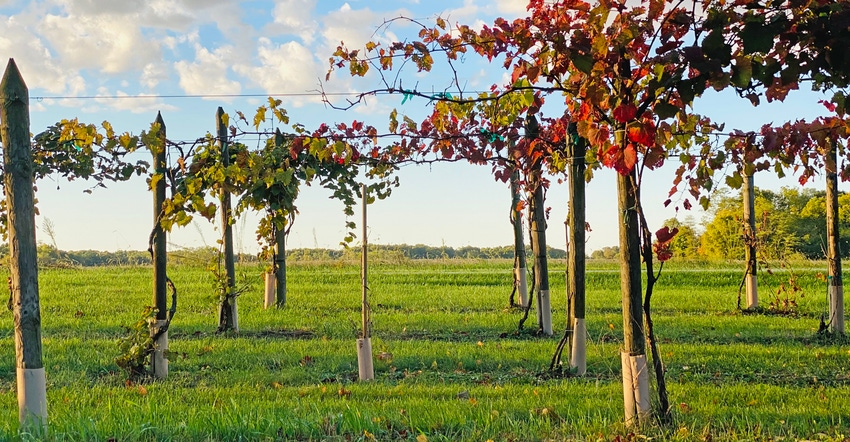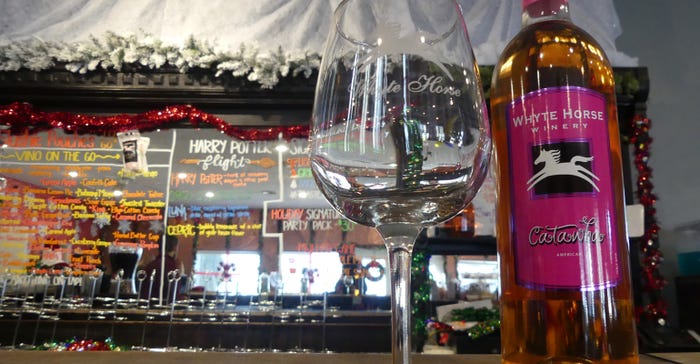January 3, 2022

The concept of agritourism has blossomed over the past 15 years. Indiana’s wine industry is a big part of that growth, drawing a new kind of attention. Agritourism isn’t just corn mazes and pumpkin patches here in Indiana anymore.
According to Christian Butzke, professor of food science at Purdue University, there were only 36 wineries in Indiana in 2005, compared to today’s 118. Butzke is a wine industry expert who supports the state’s Extension programs and domestic wine producers.
As the number of smaller wineries grew, so did demand for the experience, Butzke says. The average Hoosier will drink 10 bottles of wine a year, but part of the fun is making it an event.
Many newer wineries are set up to host events. They can get creative, ranging from wine tastings while painting to Christmas parties and weddings. Operations such as Oliver Winery in Bloomington offer tours illustrating how their wine is made step by step. Some events have been modified due to COVID-19. Oliver Winery is the largest winery in the state and ranks in the top 20 largest wineries nationwide, according to Butzke.
These events enable communities across the state to grow economically. More jobs are created to sustain these small businesses and expand tourist attractions. Some tourists are even coming from outside Indiana.
Grapes for wine
While most wine grapes and fruits are grown in California, Indiana’s vineyard acreage is growing steadily. The state is currently up to about 500 acres of grapes, Butzke says. This also means it is becoming easier for smaller wineries to grow and produce their own wines instead of importing grapes from other states.
As described by Butzke, the process of making wine is complicated but has some basic steps. First, grapes are cracked open, creating must, which is the combination of seeds, pulp, skins and juices. If it’s a white wine, the juice is pressed out.
Next, yeast is added to the grape juice to ferment. Once the fermenting process is complete, alcohol is formed. If a red wine is being made, must and juice are not separated for fermentation.
One winery growing its own grapes is Whyte Horse Winery. The winery’s main location is Monticello. However, part of its 10 acres of grapes is grown near Logansport. The winery grows seven varieties of grapes and makes all its wine on location. Customers can see the process unfold at Whyte Horse from start to finish.
Whyte Horse Winery is growing. It will be expanding to a new location soon, according to the manager, Amanda Crain.

There are also benefits to Indiana wineries that import grapes from the West Coast. The climate there enables better growing seasons for grapes. About 95% of U.S. wine grape production is in Northern California, Oregon and Washington.
According to Butzke, the input of labor and work creates higher costs for local vineyards. This is one reason local consumers can find cheaper wines from the West in stores. The region’s specialization allows it to compete more cheaply.
However, this also helps local wineries that import grapes. They can focus on customers. Indiana wineries accomplish that local and sustainable aspect by producing the final product in Indiana.
Selling the experience
The cost difference in a bottle of wine can also be attributed to the overall experience. If customers go to a local Indiana winery to tour, taste and buy wine, they’re buying the experience, not just the bottle. This gives Hoosiers something to do with their time for entertainment. People don’t go to the grocery store to buy wine for the same reason they head to a winery.
As Indiana sees a surge in this industry, it’s important to understand its unique and distinct qualities. Butzke says fruit wines and sweet wines are becoming more popular than ever. Part of this trend relates to the type of grapes grown. Referencing the traditionally, often dry European wines, Butzke compares them to the popular, sweeter, Midwestern versions made from grapes native to the Americas. This also applies to the crosses between the American and European grape species, the so-called hybrids — such as Indiana's state grape, Traminette.
Grapes that make tasty wines are not the same as table grapes. Wine grapes are typically much smaller, and chock-full of flavor and seeds.
Indiana has seen the wine industry expand greatly over the past couple of decades, and Hoosiers hope to see this trend continue in the future.
Mehling is a senior in the Purdue University ag communications program.
You May Also Like




